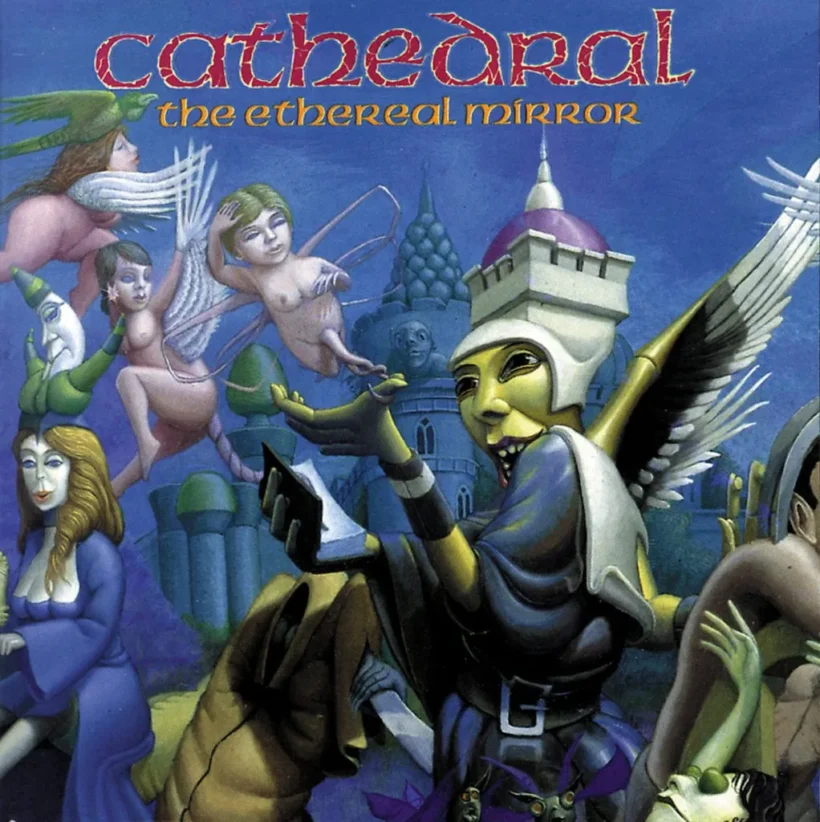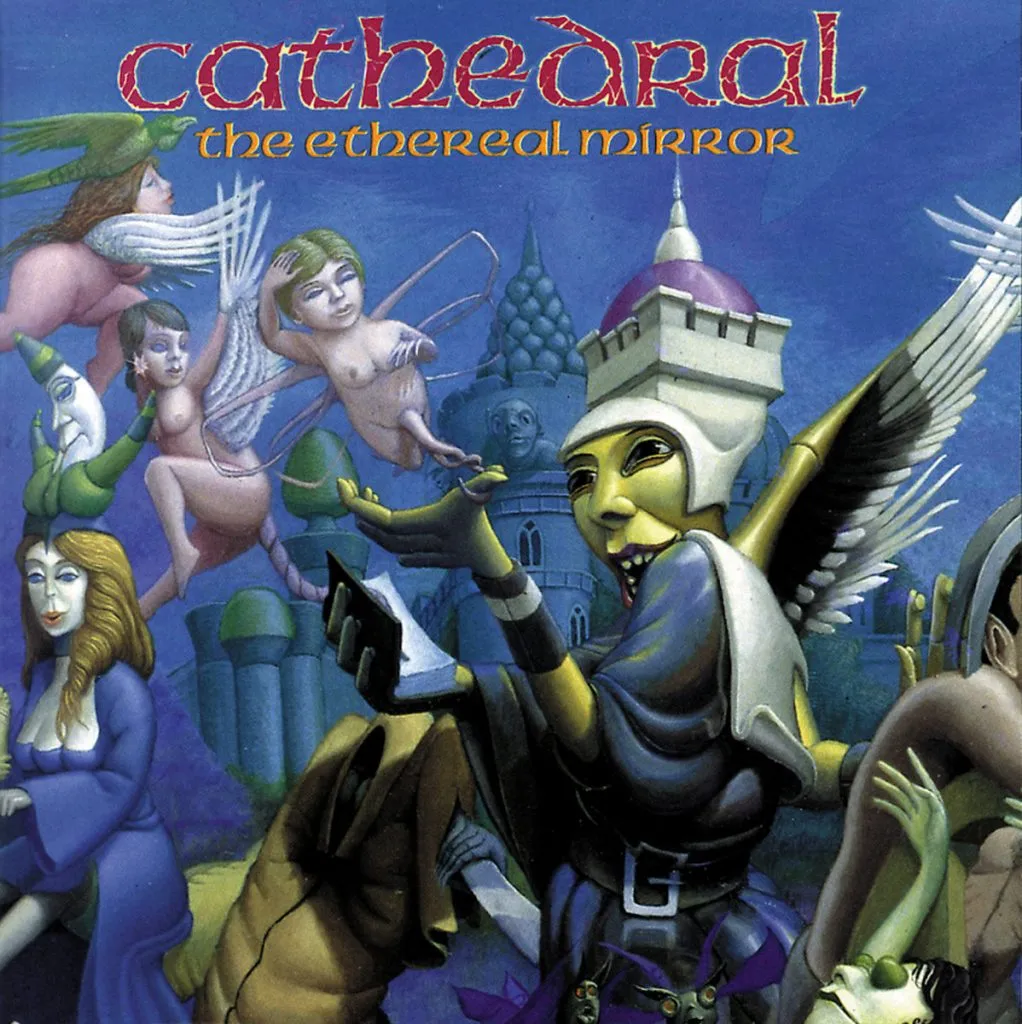
All the warning signs were there. We should’ve seen The Ethereal Mirror coming. The large majority of us didn’t. The glacial pace of Forest of Equilibrium and its overcast attitude weren’t going to be replicated on Cathedral’s second album. The Coventry-based outfit had moved on for all intents and purposes, with 1992’s Soul Sacrifice EP serving as the vanguard for new sounds from new influences penned by musicians whose growth between intervening years was unprecedented. The Ethereal Mirror was doom evolved, a near full-circle back to its origins of Black Sabbath and musical zeitgeist of the late ’60s and early ’70s. Doom metal, from Cathedral’s point of view, was no longer caged in single-digit BPMs and the misty moors of an imagined gothic England. It’s what we all wanted—maybe a few thousand worldwide—but didn’t get on The Ethereal Mirror.
This must be said, however: Cathedral in 1993 were radical. The Brits had signed to Columbia Records via a license agreement with Earache Records, a deal spearheaded by ex-Earache staffer Jim Welch. They had, along with a select few, mystifyingly transitioned from dusty mausoleums of the underground to the big boys’ club of major labels and major label expectations. To us, Cathedral’s John Hancock in Columbia’s numbers-only hands was both betrayal and exciting. Additionally, Cathedral didn’t want to be locked down as an edge-case death metal band. They didn’t want to be linked to their labelmates sonically or aesthetically.
When singles “Grim Luxuria” and “Ride” singles hit in early 1993, the sudden brightness to Cathedral was shocking. They were still ultra-heavy, but at the same time, Garry “Gaz” Jennings and Adam Lehan’s riffs didn’t suffocate and consume. They illuminated—shed light on the origins of doom, heavy rock, progressive music—and grooved like a pair of corduroy bell bottoms. Lee “Doz” Dorrian’s subterranean growl had also changed. He was no longer the ex-Napalm Death singer moaning in agonizingly slow motion. It was almost like somebody had paid his rent for the next year and given him a healthy record shopping stipend.
When the full album hit later that winter, Cathedral fans divided the album into likes and dislikes. “Jaded Entity,” “Ashes You Leave” and the wild “Phantasmagoria” were in Camp Doom. “Ride,” “Midnight Mountain” and “Enter the Worms” took refuge in Camp Rock. The rest of the album’s tracks, “Fountain of Innocence” and “Imprisoned in Flesh,” were left for inclusion on either side. In truth, Cathedral were mixed about The Ethereal Mirror. Dorrian wished for a darker, more extreme vibe, while Lehan, Jennings and drummer Mark Wharton were ready for Cathedral’s newfound ability to rock socks off. Perhaps they wanted the same thing, but producer David Bianco didn’t allow that to happen. Bianco’s big-time production separated the Brits’ sound like no producer previous.
The Ethereal Mirror enters the Hall on the merits of its vision, bravery and heft. At the time, it sounded like Cathedral had gone mad, taken too many psychedelic drugs and made an album for an audience that didn’t exist. Not since 1977 anyway. Now, 30 years later, it’s an influential piece that has stood the test of time, still stuck between doom and rock. Back to pinnacles high, my friends!
Need more classic Cathedral? To read the entire seven-page story, featuring interviews with the members who performed on The Ethereal Mirror, purchase the print issue from our store, or digitally via our app for iPhone/iPad or Android.
